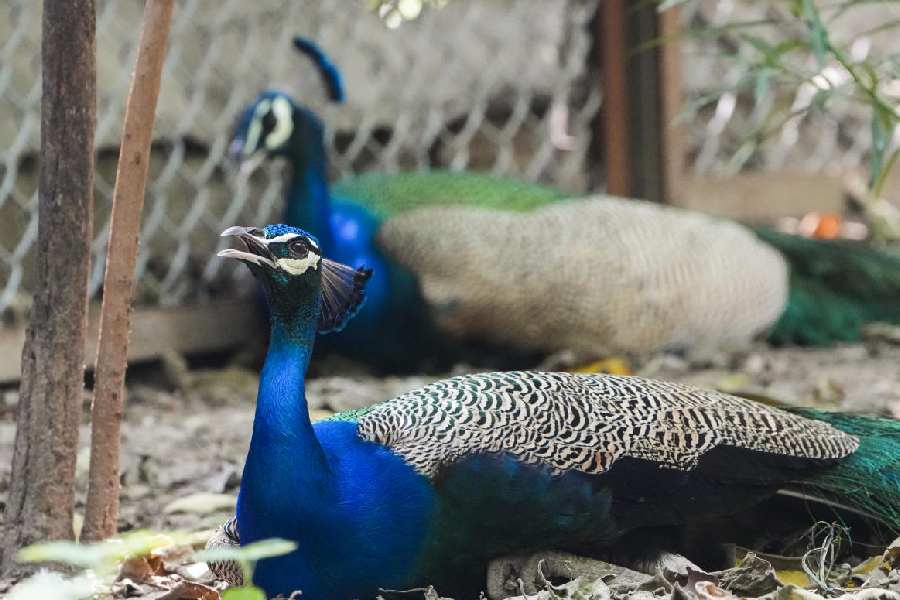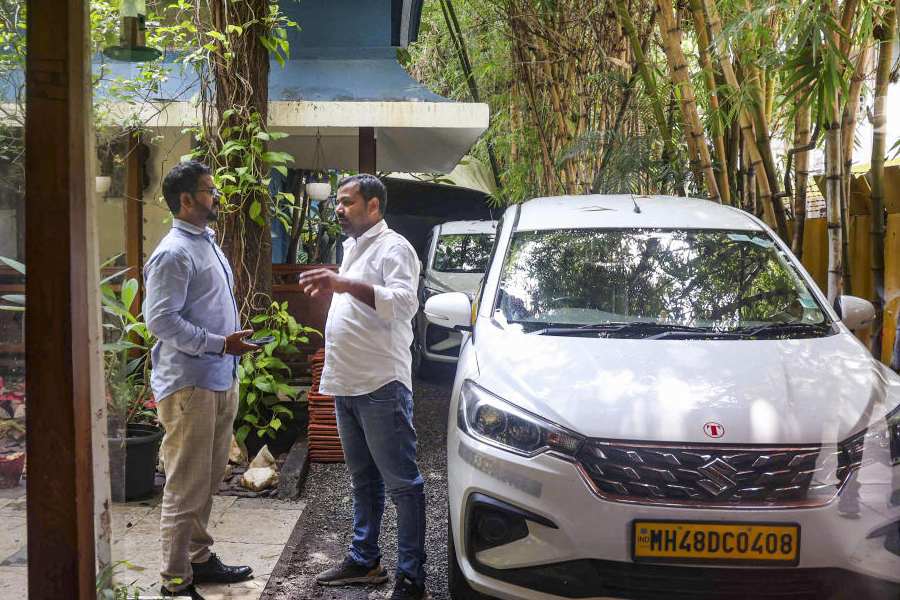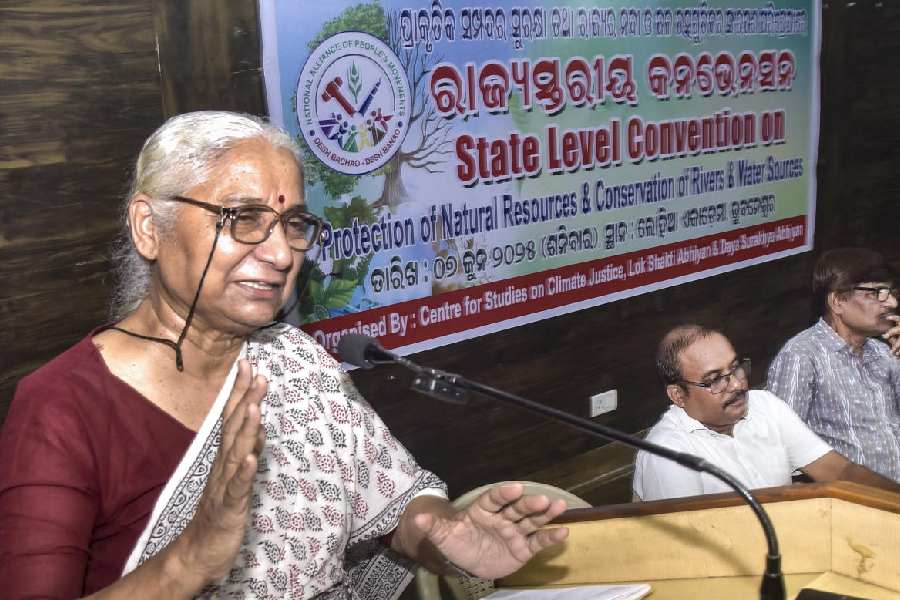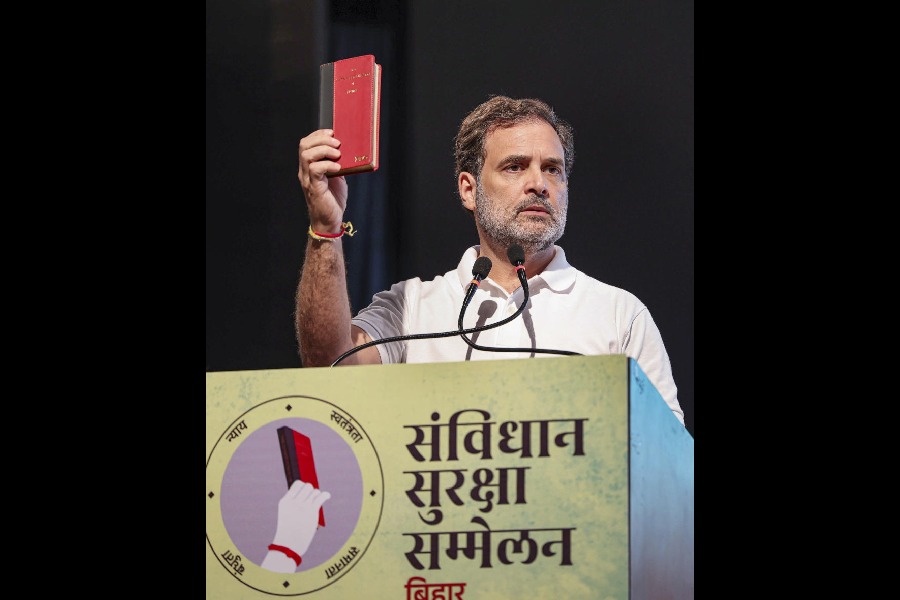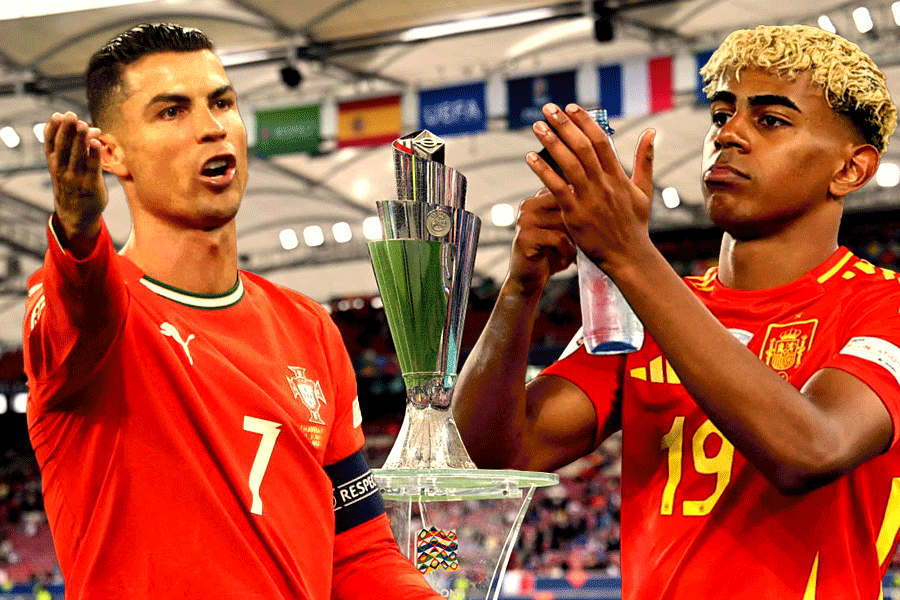 |
| Ketaki Sheth (right foreground, wearing a cap) shooting the dazzling Durga image in the thakurdalan of the Mitra family of Dorjipara in north Calcutta. |
After having walked the streets of Calcutta for the past three days since Friday with her Leica as her constant companion, stopping over at pandals or taking in the splendour of a stately home puja, Ketaki Sheth cannot forget the circular rail tracks in Sovabazar.
She waxes eloquent about the “fantastic buildings”, (actually old warehouses), the track, the “parallel incredible road” which drew one’s attention away from the sky. She found the ghats interesting, but it was the “frenetic activity” along the Hooghly that impressed her most.
Sheth, 44, who works only in black and white, is known for her large body of street photographs of Bombay and for a collection of photographs in a square format of Patel twins taken over a period of three years in this country and in the UK. The Patel photos were exhibited at Tate Modern and turned into a book, titled Twinspotting.
She says she has stuck to monochrome because in her time, the masters did so. Durga puja is colourful but “When I look through the camera, it is in black and white”. She is concerned that it is becoming increasingly difficult to find silver bromide and Kodak Tri-x 120 mm film in India. She is even more concerned that photography is not taken seriously here.
Photography fired her imagination only after she was “bowled over” by the black-and-white prints of Sooni, who had majored in photography from Harvard. Both in their 20s, they became friends. Sooni started showing Sheth her books on photography and she realised what she calls the “chaska” of photography, street Hindi for the “real high”. So Sheth began to shoot. Then on her friend’s advice she went for a four-month course at New York University. “I didn’t waste a minute,” she recalls. That was 1984, when she met Raghubir Singh.
“Raghu said you can’t understand photography unless you have touched good prints,” she says, and she actually did so in the museums. Singh took her to the studios of photographers like William Gedney and Lee Friedlander and the 20-something girl was overwhelmed. She calls Singh a “constructive teacher”, who “pushed” her to work without thinking of exhibitions, and “critically looked” at her photographs.
Sheth was back in 1985, and she began walking the streets “getting that right picture”. She knew she was not good at journalistic work. But the street “was a good canvas” with “the unexpected happening at every turn”.
She doesn’t wait for the right moment because she is “too impatient to move on”, following the “direction of light, one of the major tools of photography”.
Her “controlled” photographs of twins was “different from the surprises of the street”. The affinity between twins is suggested through their physical proximity, some almost as close as Siamese twins or uncannily like mirror images. She is excited about Calcutta but “I won’t know if it worked till I go and see the contact sheet”.





